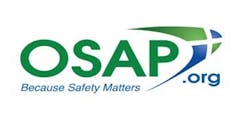OSAP comments on Tulsa oral surgeon's infection control violations
The Organization for Safety Asepsis and Prevention (OSAP) said the March 28th reports regarding the investigation of a Tulsa, Okla., oral surgeon was as “shocking” to the dental profession as it was to dental patients in Tulsa.
OSAP said the investigation that led to the testing of 7,000 dental patients treated by the oral surgeon “is as shocking to dental healthcare professionals as it is to the patients for whom we provide oral healthcare. While none of us outside of that practice and the officials investigating the reported violations can know all of the details, the Associated Press reports and other news agencies suggest that there is at least one suspected case of HCV transmission to a patient.”
OSAP noted the media reports that the dentist used instruments that were rusted and pitted, rendering them unsuitable for proper sterilization.
Exclusive interview with Susan Rogers of the Oklahoma Board of Dentistry on Dr. Scott Harrington
Tulsa dental patients screened after investigation of dentist
ADA Statement on Infection Control in Dental Settings
“He also is suspected of using single vials of medications on multiple patients and allowing unlicensed individuals to perform procedures that would require licensure, such as administration of intravenous medications,” OSAP said in a statement. “The office had no written infection control protocol. The Organization for Safety, Asepsis and Prevention (OSAP) would like to provide practitioners with information that may be helpful in reassuring patients who become fearful of receiving dental care due to the widespread reporting of this case. It is important to focus on why patients should feel safe in our clinics and offices.”
OSAP said “talking points” with patients include:
- Inform patients that the practice uses evidence-based infection control precautions as recommended by the Centers for Disease Control and Prevention. The latest recommendations and other resources can be downloaded from the CDC at http://www.cdc.gov/oralhealth/infectioncontrol/index.htm.
- Explain that dental anesthetics are provided using sterile single-use needles and cartridges of anesthetic and that these items are properly discarded after each patient.
- If IV medications are used, those medications are either from single-dose vials or that multi-dose vials are accessed only once with a single needle and syringe and that additional medications, even for a single patient, are drawn with a new syringe and needle.
- An explanation of the sterilization process, including thorough cleaning, examination and then sterilization of instruments.
- Reassurance that instruments are maintained in sterile pouches or wrap until they are needed for patient care. It may be particularly useful to only open pouches once patients have arrived, so they may see for themselves that the instruments are properly packaged.
- Discussion of processes used for sterility assurance, including chemical indicators on and/or in packs of instruments and the regular monitoring of the sterilization process though the use of a biological indicator (spore test).
- Reassure the patient that all procedures requiring licensure or certification are provided only by professionals licensed to provide those services. More information may be found through the American Dental Association (www.ada.org).
“Finally, this case serves as a reminder to ensure all professionals understand the guidelines and regulations related to infection control practices in dentistry,” OSAP noted. “Every dental health-care professional should periodically review infection control procedures and have those procedures in writing. Communication between team members is also essential to ensuring everyone understands their role in the infection control processes. At least annual review of written protocols should include all team members, and the scientific literature as well as other resources such as the CDC, OSAP and ADA should be reviewed for changes in recommendations.”
OSAP has a broad array of instructional content and educational resources available to dental clinicians at www.OSAP.org. The organization will continue to monitor the situation and post new information and resources as they become available.

